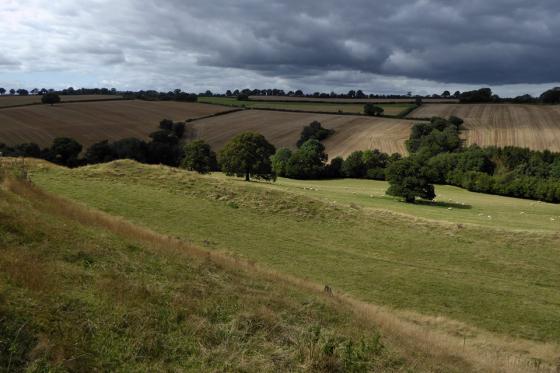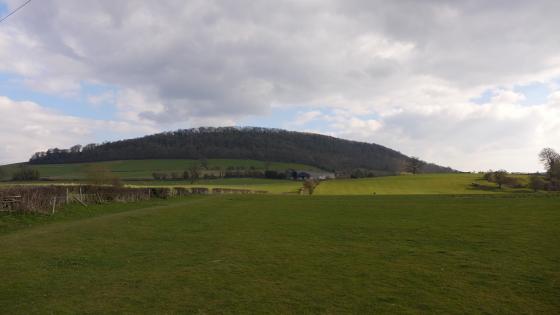
The conical shape of the hill is best appreciated from the hillside above Aymestrey, across the other side of the Lugg valley.

The conical shape of the hill is best appreciated from the hillside above Aymestrey, across the other side of the Lugg valley.

Inner and outer ramparts, northwest corner of the fort.

Gap in the inner rampart on the west side of the fort.

Looking down on the outer rampart from the inner at the southeast of the fort. The stone built nature of the bank can be seen.

Looking along the slight scarp inside the inner bank, on the east side of the fort.

The flat area at the summit.

Once inside the ramparts, the conical hill continues to rise fairly steeply to its summit.

Well-defined inner rampart at the northwest of the fort.

Looking along the outer rampart on the fort’s northern side.

Looking down on conical Pyon Wood from Yatton Hill Common, just west of Croft Ambrey, the nearest neighbouring hillfort. The snowy mountains of the Radnor Forest rise beyond.
‘Visited’ 27.6.10.
Not really a visit but an attempted observance from afar! I took the small lane which runs to the north of the hillfort off the main road. Unfortunately the entire hill is covered in trees and there is no public right of way to the site.
I had a quick look for any easy access points for a ‘sneak’ visit but I couldn’t see any. I had Dafydd with me so I didn’t fancy a battle through the trees. Nothing much else I can say!
From “Herefordshire Register of Countryside Treasures” (1981 H&WCC):
“Pyon Wood Camp, Aymestrey
Iron-age Hill Fort with double ramparts. About 9 acres in area including defences with one definite entrance at NE corner. Roughly triangular in shape and thickly covered in trees and brambles.
Location
Knoll 3/4 mile N of Church and W of A.4110”






































